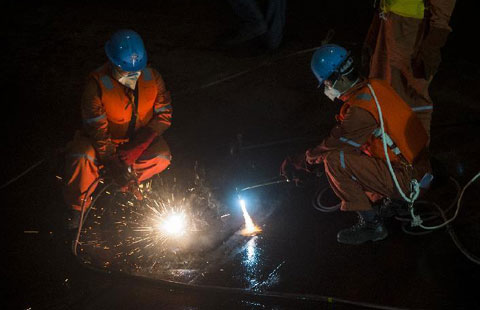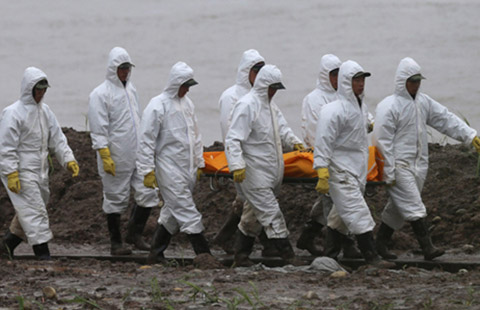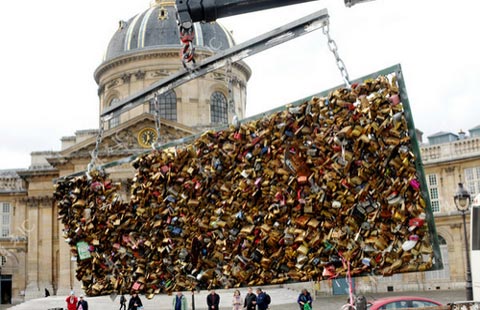
 |
|
Rescuers are seen on the cruise ship Eastern Star that capsized late on Monday in the Jianli section of the Yangtze River in central China's Hubei Province, June 3, 2015. Rescuers have only found 14 survivors, and so far have retrieved 26 bodies, leaving over 400 people still unaccounted for.[Photo/Xinhua] |
Saving lives shall be the top priority within the 72 hours after an accident happens, according to international practice, said Wang Zhigang, general manager of the Wuhan branch company of China Classification Society which is responsible for boat technology examination.
"If we found no sign of life after 72 hours, then we may overturn the ship,"said Wang, who is directing the rescue efforts at the scene.
Two possible rescue plans:
Plan 1: Cut three holes into the hull
Pros: The three holes are where passageways are located. That's where passengers could have gathered. Divers can take this short cut to reach the trapped passengers much faster than diving under the capsized ship.
Cons: The leftover air inside the ship may leak from the cut openings, leading to a loss of balance or the ship's immediate sinking. To avoid that, the ship must be fastened to other ships or objects.
Option 2: Lift the ship and turn it upright
Pros: By lifting the bow and stern and turning the capsized ship upright, the search and rescue can be conducted more efficiently and thoroughly.
Cons: The air in the ship's cabins may leak and turning the ship over may hurt potential survivors.
Also, this option will take longer time that could be spent saving lives.








